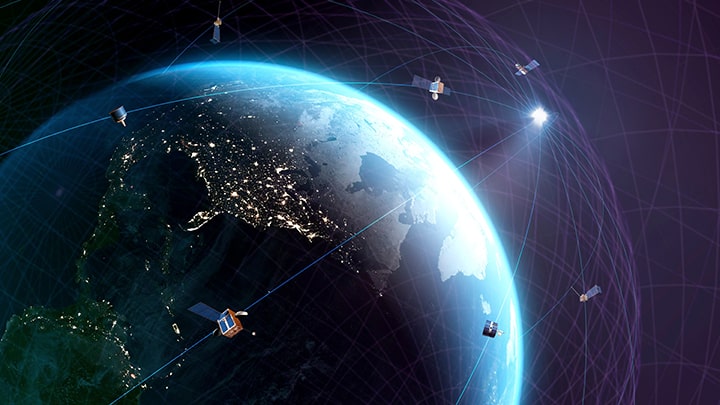

June 12, 2025
Will Thornton

Low Earth Orbit (LEO) is the region of space extending from about 160 kilometers (100 miles) to 2,000 kilometers (1,200 miles) above Earth’s surface. Satellites in this zone travel at high speeds, completing an orbit around the planet roughly every 90 to 120 minutes. LEO is home to a wide variety of satellites, including those used for communications, Earth observation, scientific missions, and increasingly, navigation.
While many LEO satellites follow circular orbits, some operate in elliptical orbits, including Molniya and Tundra orbits, which offer longer dwell times over high-latitude regions. These trajectories are often used for communications and observation services in areas not well covered by geostationary satellites.
Today, LEO is one of the most active and fast-growing areas of the so-called new space era. Thanks to advances in launch technology, satellite miniaturization, and the rise of commercial space ventures, thousands of satellites are already operating in LEO, with many more to come. The proximity of these satellites to Earth enables lower communication latency, high-resolution imaging, and lower costs compared to satellites in higher orbits, helping to transform industries and create new opportunities.
One of the main challenges for LEO satellite constellations is to maintain a precise and continuous PNT solution for critical functions such as onboard navigation, precise orbit determination, and timing synchronization. While GNSS (Global Navigation Satellite Systems) like GPS were originally designed to serve users on or near the Earth’s surface, satellites in low Earth orbit also rely on these GNSS signals for PNT. However, using GNSS at LEO comes with significant technical challenges:
Launch vehicles heading to LEO face similar navigation challenges—plus the added complexity of operating in dynamic, high-vibration environments during ascent, where maintaining GNSS signal lock can be particularly difficult.
LEO is emerging as a source of future PNT capabilities, not just a user of them. A growing number of companies and agencies are exploring alternative navigation solutions based on LEO satellite constellations. Because LEO satellites are much closer to Earth, they can provide stronger signals and lower latency than traditional GNSS systems. This opens the door for new forms of navigation and timing services, potentially enhancing availability and robustness for users in challenging environments such as urban canyons, indoors, or under heavy foliage.
Moreover, the large number of LEO satellites planned for broadband internet services could be leveraged to deliver precise navigation information as a complementary—or even competitive—system to traditional GNSS. Some constellations already in development aim to offer PNT as an integrated service alongside communications.
Low Earth Orbit is becoming more crowded, more complex, and more critical to daily life. With new challenges in using GNSS for navigation in LEO—and exciting new opportunities for delivering PNT services from LEO constellations—the future of space-based positioning is rapidly expanding beyond traditional systems.
Looking to explore PNT for LEO satellites, launch vehicles, or alternative navigation signals from LEO? With decades of experience supporting the world’s most demanding navigation and timing applications, Spirent Federal is helping pave the way for the next generation of space innovation. Please contact us to learn more.